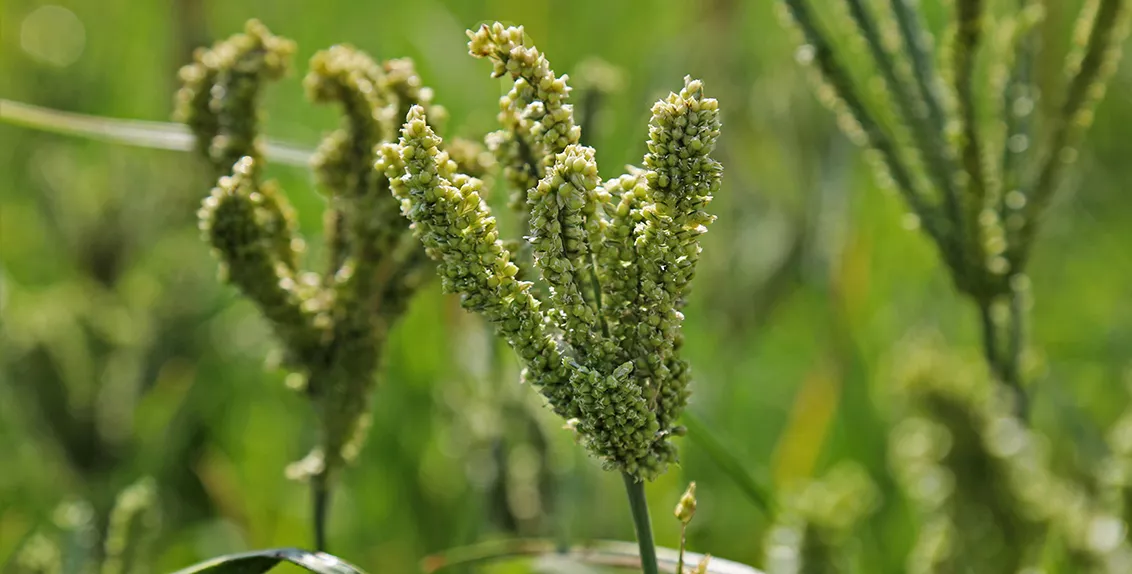Orphan crops best fit for marginal environments - a new study
22 April 2022
A recent study conducted by a team of scientists from the International Center for Biosaline Agriculture (ICBA) has evaluated orphan crops, otherwise known as neglected crops, for their potential to improve nutrition and crop diversification in marginal environments – areas of the world often characterized by poor soils, inadequate quantity and quality of water, and unfavorable climatic conditions for sustainable agricultural production.
Published in Frontiers in Plant Science, the study reviewed 14 orphan crops based on their resilience to salinity, drought, and/or heat stress; high nutritional profile; amenability to diverse cropping systems; and local availability for economic growth and social development.
In particular, the study looked at finger millet, proso millet, barnyard millet, buckwheat, fonio, little millet, African yam bean, African winged bean, moth bean, Bambara nut, jatropha, jojoba, camelina, and teff.
The study notes that orphan crops have a great potential in marginal environments and the introduction, evaluation, and adaptation of outstanding varieties of such crops for dietary diversification will contribute not only to sustained food production but improved nutrition as well. Also, advances in genomics and molecular breeding can significantly enhance the genetic potential of these crops and help develop sustainable food systems.
However, the study indicates that despite orphan crops being nutritious with good medicinal value and well adapted to suboptimal growing conditions, among other things, these crops have suffered neglect and abandonment from the scientific community because of very low or zero investments in research and genetic improvement. The study argues that a possible reason for the neglect is that these crops are not traded internationally at a rate comparable to major food crops such as wheat, rice, and maize.
According to Dr. Abidemi Talabi, a post-doctoral fellow at ICBA and one of the lead authors of the study: “In this review study, we presented the concept of orphan crops in relation to marginality and used examples of some orphan crops under three categories such as cereals and pseudo-cereals, pulses, and oil crops. Orphan crops are indigenous and invariably cultivated by small and marginal farmers in subsistence farming systems. These crops have considerable potential to boost food security and nutrition and are more relevant than ever before as we are facing several challenges in agriculture due to climate change, erratic rainfall, heat, salinization, and drought, among others. As future climatic conditions are expected to worsen further and with limited arable land and population growth, we need to add more climate-resilient crops to our food systems, which will put less pressure on diminishing freshwater resources and facilitate healthy food habits.”
There is still a long way to go before these crops are grown in farmers’ fields and added to local diets on a large scale. However, frequent extreme climatic events and continued land degradation and increased awareness of healthy lifestyle and diet are bringing these crops back to the limelight. Thanks to global awareness efforts, some of the erstwhile neglected crops like quinoa have gained popularity beyond their place of origin.
According to the authors, the overall intention is not for orphan crops to dominate the diet or compete with the major food crops but to complement production to meet the food requirements of the fast-increasing population. Moreover, the promotion and adoption of these crops are expected to achieve direct and indirect impacts on many global challenges.
The study concludes by presenting a potential roadmap for future research engagement and a policy framework with recommendations to facilitate and enhance the adoption and sustainable production of orphan crops under marginal conditions.











